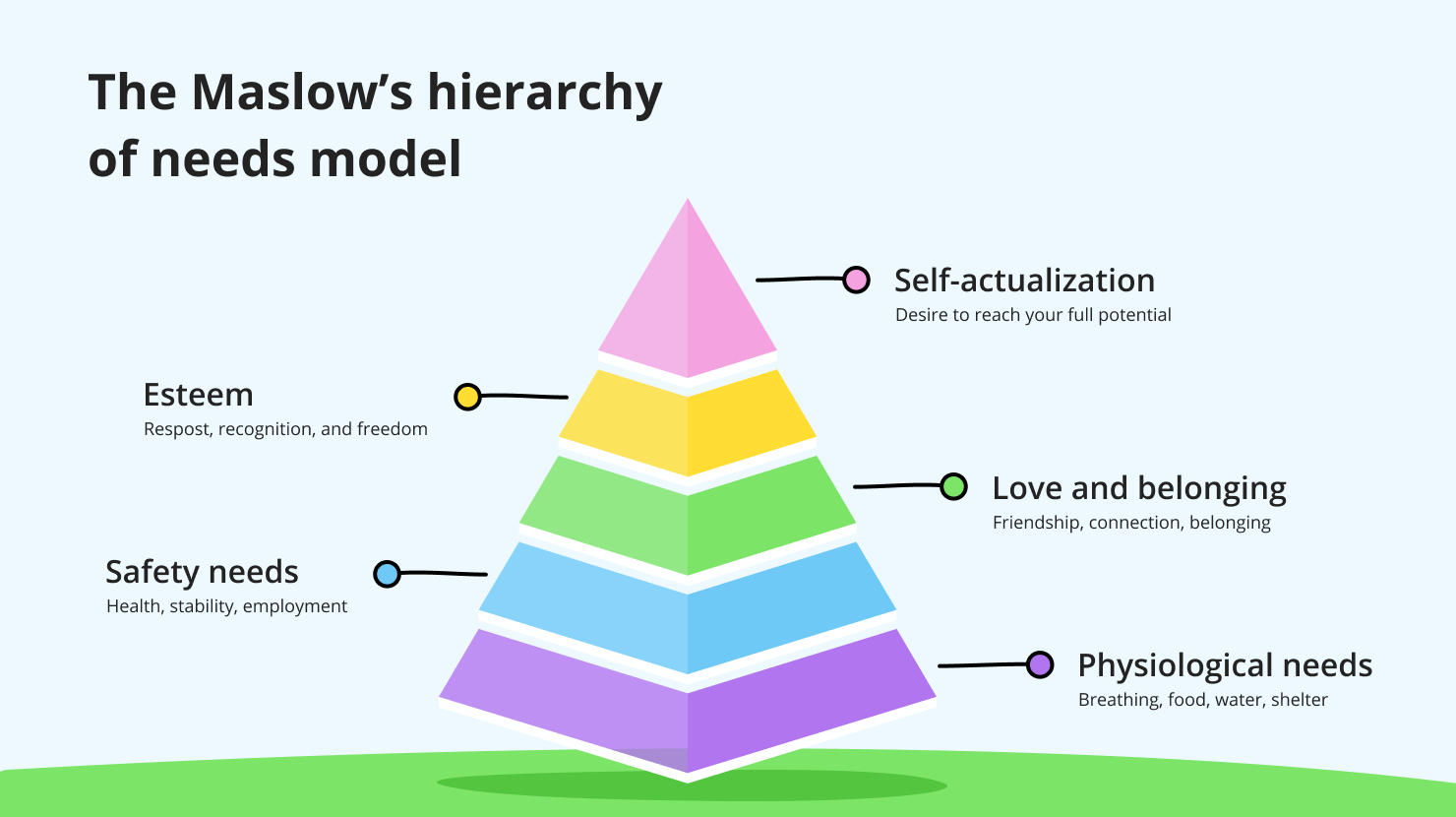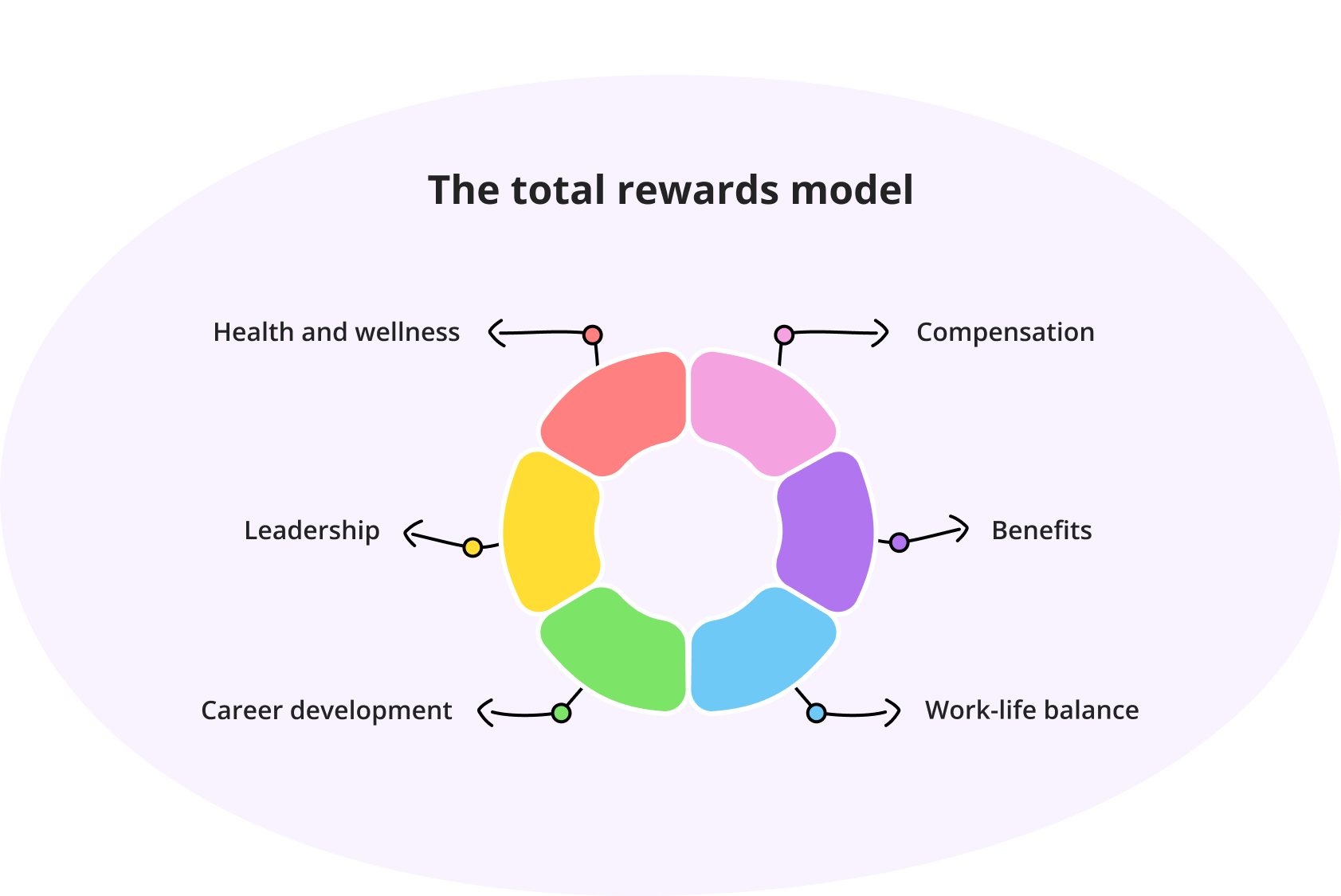There’s no question that employee engagement is a critical factor in determining an organization’s success.
Engaged employees are more productive, more innovative, and they tend to be more dedicated and loyal — however, they don’t just happen by chance.
But there is something you can do! There are several employee engagement models that have proven to be instrumental in driving success for a wide range of organizations.
What are employee engagement models? They’re structured frameworks or strategies that organizations use to help develop and maintain high levels of employee engagement.
They provide a systematic approach to understanding and improving employee engagement through different practices and principles that are aimed at creating a positive and supportive work environment.
Employee engagement models can vary in complexity and focus, but all of them have a common goal — enhancing the emotional connections and commitment of employees to their jobs and to the organization as a whole.
Just as every person is unique, every organization is unique and diverse in its own ways. So when it comes to employee engagement models, there’s no one-size-fits-all. The purpose of this article is to help you determine which model will help drive success in your unique organization.
Traditional employee engagement models
Several employee engagement models have been around for decades, or at least long enough to be thought of as traditional. In this section we’ll look at three traditional models, highlighting some of their benefits and limitations.
The Gallup 12 model
Gallup Inc. is a management consulting company that was founded in 1935. Today, they operate in 30 regions and have about 40 offices globally.
Their engagement model is a widely recognized and researched approach to measuring and improving employee engagement. It consists of 12 key questions that were designed to assess various aspects of engagement. By means of surveys and assessments, these questions are used to gather data on employee perceptions and feelings about their workplace.
The theory behind the Gallup 12 model is based, in part, on the following key principles:
- Employee engagement drives organizational success
- Organizations should focus on employee strengths and well-being
- There should be an emphasis on leadership and management
- Employees should be heard
- Employees should be recognized and appreciated
- There should be opportunities for development and growth
Explaining the 12 engagement questions
The 12 closed questions are asked survey style and require either a yes or no answer.
For example, questions 1 and 2 assess whether or not employee has a clear understanding of their role and responsibilities and whether they feel they have the necessary tools and resources to perform them effectively:
- I know what is expected of me at work
- I have the materials and equipment to do my work right
And questions 3 through 6 take things a step further and address an employee’s development, strengths, and contributions. It also assesses whether they feel valued and appreciated.
- At work, I have the opportunity to do what I do best every day
- In the last seven days, I have received recognition or praise for doing good work
- My supervisor, or someone at work, seems to care about me as a person
- There is someone at work who encourages my development
Benefits and limitations of the Gallup Q12 Model
Like any assessment, this employee engagement model has its benefits and limitations. Here are some of the key advantages and disadvantages of the Gallup Q12 Model:
Benefits:
- Research backed
- Simple and focused
- Clear, actionable insights
- Customizable
- Benchmarking
- Proven results
Limitations:
- Simplistic
- One-size-fits-all
- Quantitative focus
- Potential for response bias
- Lack of context
- Overemphasis on management
- Limited to employee perspective
There’s no question that the Gallup Q12 Model is a valuable tool when assessing and improving employee engagement. However, it should be used in conjunction with other methods and should be customized to fit your organization’s specific needs and context.
Maslow’s hierarchy of needs model

This is a psychological theory that was developed by Abraham Maslow in the 1940s and 1950s. The model is often depicted as a pyramid, with five distinct levels of human needs, arranged in hierarchy. According to Maslow, everyone is motivated to fulfill their needs in a specific order, with lower level needs taking precedence over higher-level needs.
Lower-level needs would include psychological, or most basic, fundamental needs. Things necessary for survival, like:
- Air
- Water
- Food
- Shelter
- Sleep
If these needs aren’t being met, a person’s focus will remain primarily on their physical well-being.
Top-tier needs include things like:
- Pursuit of personal growth
- Self-fulfillment
- Realizing your full potential
Clearly, these things aren’t necessary to survival.
Application of the model to employee engagement
So how is Maslow’s theory expressed through an organizational lens? Let’s look at the same tiers as above, the lowest level and the top level. In the context of an employee engagement model, psychological needs — the lower-level tier— translate into the following:
- Fair compensation and benefits
- Safe working conditions
- Access to essential resources like bathrooms
- Breaks throughout the day
In contrast, top-tier needs include:
- Opportunities for personal and professional development
- Access to innovative projects that allow for creative expression
- A culture that encourages employees to reach their full potential — self-fulfillment
While this model does provide valuable insights into employee motivation, over the years it has been criticized and modified by newer psychological research. Some argue that the hierarchy isn’t as rigid as Maslow originally proposed, and that employees — or people in general — can be motivated by needs on different levels simultaneously. Also, some may prioritize needs differently based on their own unique circumstances or cultural influences.
The Hackman and Oldham’s job characteristics model
This employee engagement model is unique in that it focuses on designing jobs that enhance employee satisfaction and drive success. It identifies five key components, which are often referred to as the “core job characteristics” that contribute to meaningful, engaging work. They are:
- Skill variety: This refers to the range of different tasks and activities that any specific job can have. A job that involves a variety of skills and tasks is more likely to be engaging because it will challenge employees and allow them to use a broader range of abilities.
- Task identity: Task identity refers to the degree to which an employee can see the complete, end-to-end result of their work. When an employee has a clear understanding of how their tasks contribute to a larger project or goal — and ultimately organizational success — it can increase their sense of ownership and motivation.
- Task significance: This is the extent to which a job has an impact of others, either within or outside of the organization. Employees are more likely to find their work meaningful and engaging when they can see how it positively affects others.
- Feedback: Regular feedback lets employees know how well they’re doing and allows them to make adjustments and improvements, increasing their motivation satisfaction.
- Autonomy: A job that allows an employee to make choices, set their own schedules, and have a say in how they work tends to be more motivating.
How the model promotes employee engagement
The Hackman and Oldham’s employee engagement model promotes engagement by addressing factors that contribute to job satisfaction, motivation, and a sense of purpose in the workplace. Designing jobs that implement the five key components mentioned above produces:
- Enhanced intrinsic motivation: Intrinsic motivation is linked to a person’s innate desires. For some, that could be challenge, growth, and meaningful work.
- Increased job satisfaction: When employees find their work meaningful, they’re more likely to be satisfied with their jobs and that, in turn, is a key driver of employee engagement.
- Opportunities for growth and development: The model promotes skill variety and opportunities for employees to learn and grow within their roles. This helps employees develop new skills, build expertise, and advance their careers, all of which contributes to a sense of engagement and commitment to their work.
- Empowerment: When a job is designed with a high level of autonomy, employees are empowered to make decisions, set their own work schedules, and take ownership of their tasks. This sense of control is a powerful motivator and helps develop engagement.
When the five key components of this model are present, employees are more likely to be highly engaged, which leads to improved job performance and helps contribute to a positive workplace that fosters growth, collaboration, and long-term success.
Modern employee engagement models
Now that we’ve covered the more traditional models, let’s take a look at some of the more modern approaches.
The strengths-based approach
The strengths-based approach is a philosophy and management strategy that emphasizes the identification and utilization of employee strengths. It’s founded on the belief that individuals are more productive and engaged when they have an opportunity to use their natural talents and abilities. Here are some key aspects and benefits of the approach:
- Talent identification: To start with, it’s necessary to identify the unique talents, skills, and strengths of individual employees. This could be done using assessments or surveys.
- Focused development: Once you’ve identified their strengths, focus on developing and refining them. This could include training, mentoring, or resources that can help them further hone their talents.
- Align roles and tasks: Managers and team leaders should strive to align employees’ roles and responsibilities with their strengths. This leads to employees who are more likely to excel in their positions and find fulfillment in their work.
- Increased engagement: When employees are encouraged to use their strength, they tend to be more engaged and motivated. They find their work more enjoyable and meaningful, which positively impacts job satisfaction.
The social recognition model
The social recognition model underscores the significance of recognizing and appreciating employee contributions within an organization. It’s rooted in the idea that acknowledging and celebrating the efforts and achievements of employees plays a crucial role in boosting morale, engagement, overall performance, and even retention.
Some key aspects of this model and their benefits are:
- Positive reinforcement: Social recognition serves as a form of positive reinforcement for desired behaviors and contributions. When an employee receives recognition and appreciation, they’re more likely to continue exhibiting these behaviors.
- Increased motivation: Employees who are recognized for their efforts are motivated to go the extra mile and consistently perform at their best.
- Enhance job satisfaction: Employees who receive recognition for their contributions tend to be more satisfied with their jobs. The feel appreciated and valued by their peers and supervisors, which contributes to a positive work environment and organizational success.
- Greater team cohesion: Social recognition fosters a sense of unity and teamwork. When individuals appreciate one another’s contributions, it strengthens the overall team dynamic.
- Talent retention: Employees who are recognized and appreciated are more likely to stay with an organization. They feel a sense of loyalty in connection, which can contribute to reduced turnover.
Techniques for implementing a social recognition program
Here are several techniques to help you establish and run a social recognition program within your organization:
- Get leadership buy-in: Make sure you have the support and involvement of senior leadership and management. When leaders actively participate in the program, it sends a strong message about the importance of recognition within the organization.
- Define your recognition criteria: Establish clear criteria for what constitutes recognition-worthy behavior or achievements. This ensures consistency and fairness in the program.
- Create a recognition committee: Form a cross-functional committee or team that’s responsible for planning, implementing, and managing the recognition program. The committee helps to ensure a well-rounded and inclusive approach.
- Choose a recognition platform: Select a technology platform or software to manage and measure your recognition program. This will allow for easy tracking, reporting, and the ability to involve a broader range of employees in recognition efforts.
The total rewards model

The total rewards employee engagement model is a comprehensive approach to employee compensation and benefits that goes beyond traditional forms of compensation — such as salary or bonuses — to encompass a wide range of rewards and incentives offered to attract, retain, motivate, and engage their employees. This can include both monetary and nonmonetary rewards.
Rewards can include:
- Compensation
- Benefits
- Work-life balance
- Career development
- Recognition and appreciation
- Health and wellness programs
Their impact on employee engagement can include:
- Increased job satisfaction
- Enhanced motivation
- Retention
- Positive work culture
- Improved well-being
- Career growth
- Better alignment with organizational goals
Designing an effective total rewards program
Your organization will need to create a comprehensive strategy that goes beyond traditional compensation and includes different monetary rewards such as those mentioned above. Here are some considerations when designing an effective program for your company:
- Understand your workforce: Know the demographics, needs, and preferences of your employees. You can conduct surveys or gather feedback to determine what they value in terms of compensation and benefits.
- Set clear objectives: Consider what you want to achieve — is it attracting top talent, increasing employee retention, or boosting overall job satisfaction?
- Customization: Customize your program so that it meets the specific needs of your organization. Tailor benefits and rewards to reflect your company culture and values.
- Flexibility and choice: Offer flexibility and choices within the program. Employees have diverse needs, so allow them to select benefits that suit their lifestyle and preferences.
Best practices for implementing employee engagement models
To successfully implement an employee engagement model, you’ll need the commitment of leadership, effective communication, employee involvement, empowerment, continuous feedback, and focus on improvement. Here are several best practices for each of these elements.
Leadership commitment and communication. Leaders must:
- Lead by example
- Implement strategic alignment
- Maintain open and transparent communication
Employee involvement and empowerment:
- Encourage employee participation in decision-making
- Empower employees by giving them the autonomy to make decisions and take ownership of their work
- Encourage cross-functional teams
- Support employee skill and career development
- Implement recognition programs
Continuous feedback improvement:
- Use regular surveys
- Implement continuous individual performance feedback
- Develop action plans
- Foster continuous learning
- Celebrate achievements, milestones, and successes, both big and small
Case studies: successful employee engagement initiatives
A Google search will offer up multiple case studies for each of the employee engagement models mentioned above — studies that prove employee success leads to organizational success. We’ll provide two here:
Implementing the Gallup Q12 Model
The Ritz-Carlton hotel company uses the Gallup Q12 model to assess and improve employee engagement. They regularly survey their employees, asking them to respond to the Q12 questions. The leadership team places a strong emphasis on the results, focusing on improving specific areas identified in the survey.
The results:
- Employee engagement: The hotel has achieved exceptional levels of employee engagement. Their employees are highly motivated and committed to delivering exceptional customer service.
- Customer satisfaction: The company’s focus on employee engagement is translated into exceptional customer satisfaction, leading to higher levels of repeat business and positive word-of-mouth marketing.
- Employee retention: The Ritz-Carlton has achieved low turnover rates in an industry known for high turnover. Their engaged employees are more likely to stay with the organization.
Adopting the strengths-based approach
Deloitte implemented a strengths-based culture by focusing on identifying and leveraging employee strengths. They initiated a program known as Strengths-based Leadership, which includes personalized coaching, training, and development programs aimed at helping employees recognize and utilize their unique talents.
The results:
- Employee engagement: Deloitte reported a significant increase in employee engagement after implementing the program. Employees felt more valued and motivated in their roles.
- Retention: The organization experienced a decrease in turnover rates, which is particularly significant in a competitive industry where talent retention is challenging.
- Performance improvement: Employees reported higher levels of job satisfaction and increased productivity. Their work was more aligned with their strengths, which positively impacted their performance.
Conclusion
There’s no question that employee engagement is a fundamental driver for organizational success. It boosts productivity, improves performance, enhances retention, creates a positive work culture, and gives employees greater well-being.
However, it could be said that it’s even more important that organizations choose the right employee engagement model. Using the right model will align with organizational goals, have greater effectiveness, be more sustainable, and ultimately give your organization a competitive advantage when attracting new talent and retaining the talent you already have. It will drive success.


